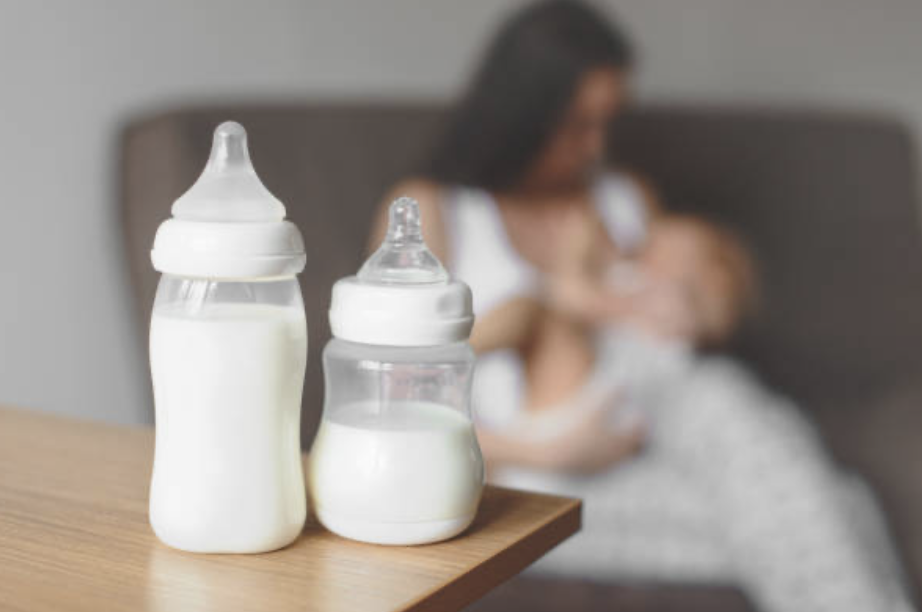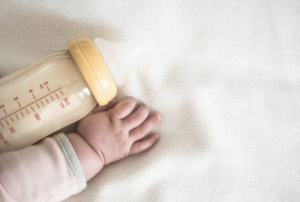

Baby bottle size


Congratulations on becoming a parent! You’re about to embark on a beautiful journey filled with countless cuddles, coos, and of course, a never-ending stream of decisions. One of the first hurdles you might face seems simple on the surface: choosing a baby bottle. But venture into the baby aisle of any store, and you’ll be met with a dizzying array of options, each promising to be the “perfect” choice for your precious little one.
However, in this jungle gym of choices, prioritizing your baby’s health and safety should be your top priority. That’s where non-toxic baby bottles come in. This guide will equip you with the knowledge you need to navigate the world of non-toxic bottles, understand the key factors to consider, and ultimately choose the one that best suits your baby’s needs and your lifestyle.
A baby’s developing body is incredibly sensitive, constantly absorbing information from the world around them. This is why it’s crucial to minimize their exposure to harmful chemicals. Certain plastics, for instance, can leach chemicals like bisphenols (BPA) and phthalates, which have been linked to potential health concerns. By opting for non-toxic baby bottles, you’re giving your baby the safest start possible.
Choosing non-toxic materials goes beyond just health. It also provides peace of mind. Knowing that your baby’s bottle isn’t leaching any harmful chemicals allows you to focus on the joys of parenthood, not worry about potential risks.
Now that you understand the importance of non-toxic materials, let’s delve into the different options available. Here are the top contenders in the non-toxic bottle arena, each with its own unique set of advantages and considerations:
Glass has been a trusted material for baby bottles for generations, and for good reason. It’s naturally inert, meaning it won’t react with milk or formula, and doesn’t leach any chemicals. This makes it a fantastic choice for parents seeking a completely non-toxic option. Additionally, glass is naturally antibacterial and very easy to clean, which is a major win for busy parents.
However, glass bottles do come with some drawbacks. They can be heavier than plastic or stainless steel bottles, which might be a concern for some parents, especially when traveling or feeding on-the-go. Another consideration is their fragility – glass bottles can break if dropped, posing a potential safety hazard.
For parents who value sustainability and durability, stainless steel bottles are a fantastic option. They’re incredibly lightweight and virtually unbreakable, making them perfect for clumsy parents (we’ve all been there!). Additionally, stainless steel bottles excel at maintaining temperature, keeping formula warm or breastmilk cool for longer periods.
The potential downside of stainless steel is that some parents find it can impart a slight metallic taste to the liquid inside. However, many brands now offer bottles with a double-walled design or interior silicone coating to minimize this issue.
While not a bottle material itself, silicone nipples deserve a special mention when discussing non-toxic baby bottles. Silicone is a safe and popular choice for many parents. It’s soft and flexible, mimicking the feel of a mother’s breast, which can help with latching and reduce nipple confusion for breastfed babies. Additionally, silicone is naturally durable and easy to clean, making it a convenient and long-lasting option.
Choosing the right material is just the first step in your non-toxic bottle journey. Here are some other crucial factors to consider to ensure your baby has a comfortable and efficient feeding experience:
Remember, every baby is unique. The “perfect” bottle for one baby might not be ideal for another. Don’t get discouraged if your little one doesn’t take to a bottle immediately. Babies have preferences, just like adults! Be patient and experiment with different shapes, sizes, and nipple types to find what works best for your little one.
Here are some tips for a smooth transition to bottle feeding:
Many parents today are concerned about the environmental impact of their choices. While navigating non-toxic bottles, it’s natural to consider the environmental footprint of each option. Here’s a breakdown to help you make an informed decision:
Ultimately, the best choice depends on your individual priorities. If sustainability is paramount, consider a stainless steel bottle with a long lifespan or a recyclable glass bottle used with care to avoid breakage.
Q: Are all plastic bottles bad?
A: Not all plastics are created equal. Look for bottles made from food-grade, BPA-free plastics. However, even BPA-free plastics might contain other chemicals, so non-toxic alternatives like glass or stainless steel are generally preferred.
Q: How often should I replace my baby’s bottle?
A: It’s recommended to replace bottles every 3-6 months, or sooner if there are any signs of wear and tear, cracks, or cloudiness in the material.
Q: What are some additional features to consider in a non-toxic bottle?
A: Look for bottles with anti-colic vents that can help reduce gas and fussiness. Leak-proof lids are also a lifesaver for on-the-go feeding. Additionally, some bottles come with interchangeable parts, allowing you to adjust the nipple size or bottle size as your baby grows.
By understanding the different non-toxic options, the key factors to consider, and the potential trade-offs, you’re well on your way to choosing the perfect bottle for your precious little one. Remember, there’s no one-size-fits-all answer, and the best bottle is the one that promotes safe and comfortable feeding for your baby. Now, armed with this knowledge, you can confidently navigate the world of non-toxic baby bottles and embark on a happy and healthy feeding journey with your little one!
Sustainable Shades For many DIY enthusiasts and design aficionados, a fresh coat of paint is…
Cruelty-Free Solutions for a Healthier You Chronic inflammation can be a relentless foe, disrupting our…
Unleashing Your Brain's Potential In today's fast-paced world, maintaining sharp mental focus and cognitive agility…
Exploring DIY Organic Makeup Fixers For the eco-conscious beauty enthusiast, the quest for flawless makeup…
A Sensitive Exploration The clean beauty movement has taken the beauty world by storm. Consumers…
Taming the Mane Frizz – the bane of smooth hair dreams. It can transform a…
This website uses cookies.